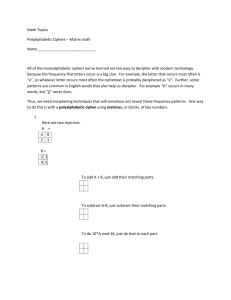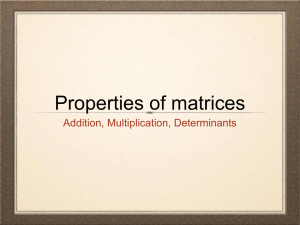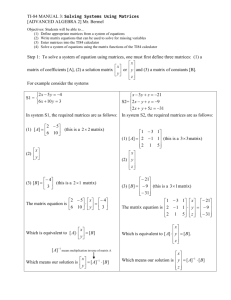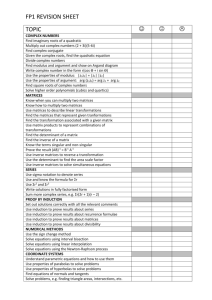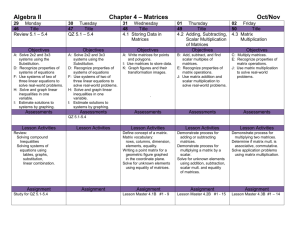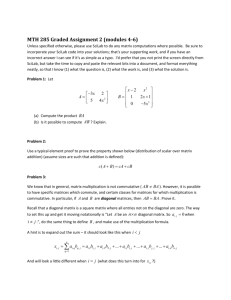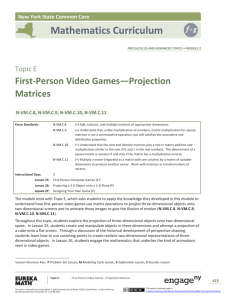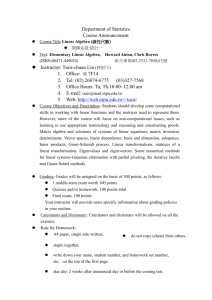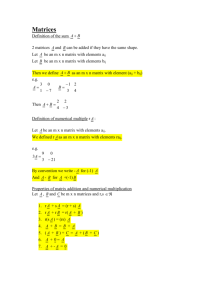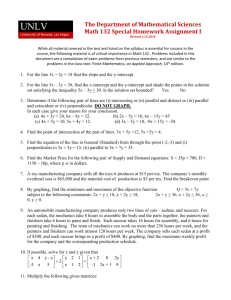Supplemental Digital Content 5
advertisement
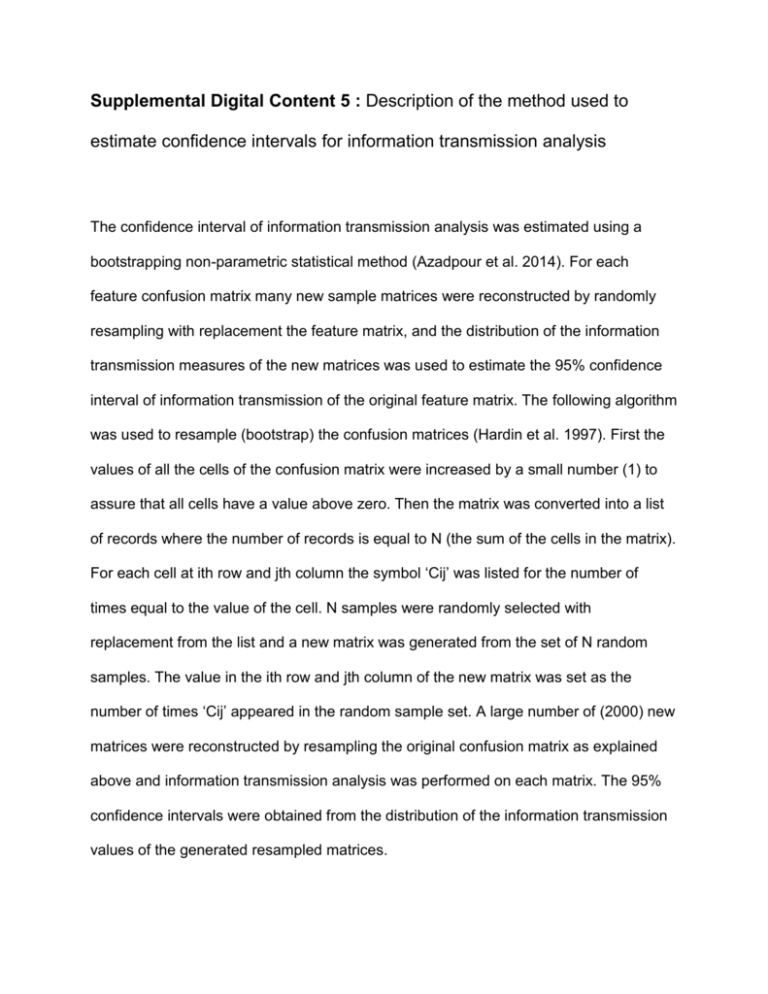
Supplemental Digital Content 5 : Description of the method used to estimate confidence intervals for information transmission analysis The confidence interval of information transmission analysis was estimated using a bootstrapping non-parametric statistical method (Azadpour et al. 2014). For each feature confusion matrix many new sample matrices were reconstructed by randomly resampling with replacement the feature matrix, and the distribution of the information transmission measures of the new matrices was used to estimate the 95% confidence interval of information transmission of the original feature matrix. The following algorithm was used to resample (bootstrap) the confusion matrices (Hardin et al. 1997). First the values of all the cells of the confusion matrix were increased by a small number (1) to assure that all cells have a value above zero. Then the matrix was converted into a list of records where the number of records is equal to N (the sum of the cells in the matrix). For each cell at ith row and jth column the symbol ‘Cij’ was listed for the number of times equal to the value of the cell. N samples were randomly selected with replacement from the list and a new matrix was generated from the set of N random samples. The value in the ith row and jth column of the new matrix was set as the number of times ‘Cij’ appeared in the random sample set. A large number of (2000) new matrices were reconstructed by resampling the original confusion matrix as explained above and information transmission analysis was performed on each matrix. The 95% confidence intervals were obtained from the distribution of the information transmission values of the generated resampled matrices. A randomization method was also used to obtain the higher limits of the 95% confidence intervals of the chance level, the latter being zero for an information transmission analysis (Azadpour et al. 2014). Several consonant and vowel confusion matrices were randomly generated (20000 times) on which information transmission analysis was performed for each articulation feature. The maximum value for information transmission that occurred in less than 97.5% of the matrices was used as the highest limit for chance information transmission for that feature. References: Azadpour, M., McKay, C. M., Smith, R. L. (2014). Estimating confidence intervals for information transfer analysis of confusion matrices. J Acoust Soc Am, 135. Hardin, P. J., Shumway, J. M. (1997). Statistical significance and normalized confusion matrices. Photogrammetric Engineering and Remote Sensing, 63, 735-740.


